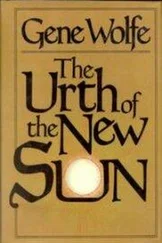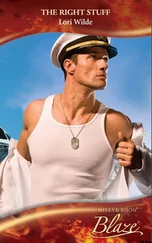Tom Wolfe - The Right Stuff
Здесь есть возможность читать онлайн «Tom Wolfe - The Right Stuff» весь текст электронной книги совершенно бесплатно (целиком полную версию без сокращений). В некоторых случаях можно слушать аудио, скачать через торрент в формате fb2 и присутствует краткое содержание. Жанр: Современная проза, на английском языке. Описание произведения, (предисловие) а так же отзывы посетителей доступны на портале библиотеки ЛибКат.
- Название:The Right Stuff
- Автор:
- Жанр:
- Год:неизвестен
- ISBN:нет данных
- Рейтинг книги:3 / 5. Голосов: 1
-
Избранное:Добавить в избранное
- Отзывы:
-
Ваша оценка:
- 60
- 1
- 2
- 3
- 4
- 5
The Right Stuff: краткое содержание, описание и аннотация
Предлагаем к чтению аннотацию, описание, краткое содержание или предисловие (зависит от того, что написал сам автор книги «The Right Stuff»). Если вы не нашли необходимую информацию о книге — напишите в комментариях, мы постараемся отыскать её.
The Right Stuff — читать онлайн бесплатно полную книгу (весь текст) целиком
Ниже представлен текст книги, разбитый по страницам. Система сохранения места последней прочитанной страницы, позволяет с удобством читать онлайн бесплатно книгу «The Right Stuff», без необходимости каждый раз заново искать на чём Вы остановились. Поставьте закладку, и сможете в любой момент перейти на страницу, на которой закончили чтение.
Интервал:
Закладка:
The apes had begun their training at the same time as the astronauts, i.e., in the late spring of 1959. By now, 1960, they had been through almost every phase of astronaut training, other than abort and re-entry emergency sequences and attitude control.
Some of the apes could operate their procedures trainer like a breeze, almost as rapidly as a man. The vets had every reason to be proud of what they had accomplished. On the outside the animals were as mild, tractable, smart, and lovable as the best little boy on the block, although inside… something was building up like Code Blue in the boiler room.
About eight hundred miles west of Holloman Air Force Base, in the same latitude of the great American desert, was Edwards. The X-15 program had begun to pick up some momentum. There were even journalists coming to Edwards—in the midst of this, the Era of the Astronaut—and talking about the X-15 as "America's first spaceship." There were two men on hand at the base writing books about the project; one of them was Richard Tregaskis, who had written the best seller Guadalcanal Diary . The X-15, America's first spaceship … could it be? A year ago it would have seemed impossible. But now the Mercury program was beginning to lag. NASA had talked of making the first manned flight in mid-1960; well, it was now mid-1960, and they didn't even have the capsule ready for unmanned testing.
NASA's prime pilot for the X-15 project was Joe Walker. He looked like a young towheaded version of Chuck Yeager, the country boy who loved to fly. He talked like Yeager. Well, hell, who didn't around here? But with Walker it came naturally. Just as Yeager was from the coal country of West Virginia, Walker was from the coal country of Pennsylvania, and Walker liked to do that Yeager thing where you mixed up a lot of up-hollow talk—"The mother liked to blowed up on me"—with postwar engineerese about parameters, inputs, and extrapolations. As a matter of fact, Yeager had let it be known that he thought Walker was the pick of the litter at Edwards now.
Yes, Walker looked and sounded like a younger version of Yeager—but in fact he was two years older. Yeager was still only thirty-seven, and Walker was thirty-nine. Walker was seven months older than Scott Crossfield. So aside from everything else, Walker didn't have time to cool his heels. If the X-15 and X-20 programs at Edwards got stalled while all the money and attention went to Project Mercury, it would be bad news.
Edwards had grown until it was about twenty times the size it was during the heyday of Yeager. Pancho Barnes's Happy Bottom Riding Club was long gone. The Air Force had taken her property by eminent domain for the building of a new runway. There had been a bitter fight in court, during which a base commander had accused Pancho of running a whorehouse, and Pancho had told the court that she had it on good authority that the old peckerwood had instructed his pilots to accidentally-on-purpose napalm her ranch. Pancho had gone into retirement, with her fourth husband, her erstwhile ranch foreman, over in the town of Boron, to the northeast of the base.
There were now about three thousand Air Force personnel at Edwards and about seven thousand civilians, some with NASA, including Walker himself. Yet the high desert was so vast and so open that it swallowed up all ten thousand of them with no trouble at all, and the place didn't look terribly different except during the afternoon traffic jam, when all the civil servants got off work and sped toward the air conditioners that awaited them in their tract homes. Walker and his wife and two children lived in Lancaster, a desert town about a half hour's drive west of Edwards. Walker had built a house in a tract that some inspired developer—inspiration was the choicest item in the real-estate boom of the period—had named White Fence Farms. You had to build a white fence around your house in order to live there. That he did. As for the Farm part—here you had yourself a problem, unless you farmed Joshua trees. The developer's idea, in his sales pitch, was that you could build chicken coops at the rear end of your lot and have a second income.
At that, Walker's place looked like a little bit of heaven compared to Bob White's. But then, on the surface, Walker and White were different in every respect. White, who was a major, was the Air Force's prime pilot for the X-15 project. He was the eternally correct and reserved Air Force blue-suiter. He didn't drink. He exercised like a college athlete in training. He was religious. He was an usher in the Roman Catholic chapel of the base and never, but never, missed Mass. He was slender, black-haired, handsome, intelligent—even cultivated, if the truth were known. And he was terribly serious. He was not a beer-call fighter jock. Not many people picked out Bob White to just shoot the breeze with. White and his family lived on the base itself at 116 Thirteenth Street in a miserable grid of military housing plots known as the Wherry housing section. Or it had been known as Wherry at the outset. By 1960 it was usually referred to as Weary housing. Children grew up there thinking that Weary housing was the real name. Parked out front of White's place was an unpainted Model A Ford. The Air Force, being the newest branch of the service, was strong on instant tradition. This old junker, the Ford, was bestowed, as an ironic sculpture of the Right Stuff, upon whomever was the number-one Air Force test pilot at Edwards. Scott Crossfield, the prime pilot for the manufacturer, North American, had completed the first phase of testing the X-15, checking out the power system and basic aerodynamics. White and Walker had been chosen to push the rocket plane to its outer limits, which were envisioned as speeds in excess of Mach 6, or about 4,000 miles per hour, and, more important, an altitude of 280,000 feet. Just where "space" began was a matter of definition that had never been fully resolved. But fifty miles up was generally accepted as the boundary line. There was very little atmosphere left at that altitude; in fact, once a ship reached 100,000 feet, there was not enough air remaining to provide aerodynamics. The X-15's target of 280,000 feet was 53 miles up.
White and Walker had begun to fly the X-15 with the so-called Little Engine. This was, in fact, two X-1 engines built into a single fuselage. They provided 16,000 pounds of thrust. The X-15 was the most evil-looking beast ever put into the air. It was a 7.5-ton black chimney with little fins on it and an enormous blocky tail. The black paint had been created to withstand the heat generated by friction when the ship went up above 100,000 feet and re-entered the denser atmosphere below. Everyone was waiting for the delivery of the Big Engine, the XLR-99. This was a rocket with 57,000 pounds of thrust, or four times the base weight of the ship. Once the XLR-99 was installed… well, Walker just might become the first man to cross the boundary into space. The engine's 57,000 pounds of thrust were only 21,000 pounds less than that of the Redstone rocket, which—eventually—was supposed to take the astronauts on their first flights. As a matter of fact, it was the development of the Redstone as a missile that had first given NASA engineers like Walt Williams the idea for the X-15, back in the early 1950's.
How, then, could there be so much excitement over Project Mercury and so little over the X-15? Here was the thing that got to the boys after a while, no matter how nonchalant they tried to appear: the Mercury astronauts were national heroes without ever having left the ground—all because they had volunteered to ride on top of rockets. Well… Walker and White and Crossfield, like Yeager before them, had already ridden rockets, from the X-1 to the X-15. And they had ridden them as pilots . Your own brain was the guidance system for the X-15, and your own hand maneuvered the ship. In the Mercury-Redstone system, a bank of computers was the pilot, and the astronaut was a passenger. Why couldn't everyone comprehend such a simple fact? Was it because the astronauts were seen as America's front runners in the race with the Russians? Well, if so, that was pretty ironic. By now, mid-1960, the astronauts were supposed to have gone up in their first ballistic flights. That was the whole point of choosing the Mercury system. It was dirty—but it was quick; supposedly. But the Mercury capsule wasn't even ready yet. There had been one delay after another. It was beginning to look unlikely that there would be a manned launch before 1961. The X-15 project was now actually ahead of Project Mercury in the attempt to reach space.
Читать дальшеИнтервал:
Закладка:
Похожие книги на «The Right Stuff»
Представляем Вашему вниманию похожие книги на «The Right Stuff» списком для выбора. Мы отобрали схожую по названию и смыслу литературу в надежде предоставить читателям больше вариантов отыскать новые, интересные, ещё непрочитанные произведения.
Обсуждение, отзывы о книге «The Right Stuff» и просто собственные мнения читателей. Оставьте ваши комментарии, напишите, что Вы думаете о произведении, его смысле или главных героях. Укажите что конкретно понравилось, а что нет, и почему Вы так считаете.











